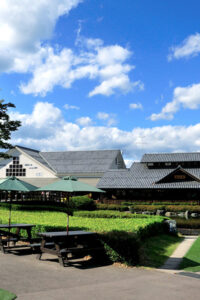
Kobayashi Kiyochika is often referred to as the last ukiyo-e artist. Kobayashi goes by this name because he stuck to colored woodblock prints known as nishiki-e and kept pinning his hope on their potential until the end, despite the diversification and development of printing techniques in modern times. He must have had the pride of a defeated person because he was a vassal of the shogun born in Edo (present-day Tokyo). However, the innovativeness of Kobayashi and his importance as a modern artist stand out when we take away such frameworks associated with Kobayashi’s profile as an ukiyo-e artist. Kobayashi as a vassal of the Shogun tossed about by the Great Transformation from Edo to Tokyo We can learn how the young Kobayashi lived through the turbulent times from the end of the Edo period to the Meiji period in Kiyochika jigaden (Self-portrait ... ... [Read more]

